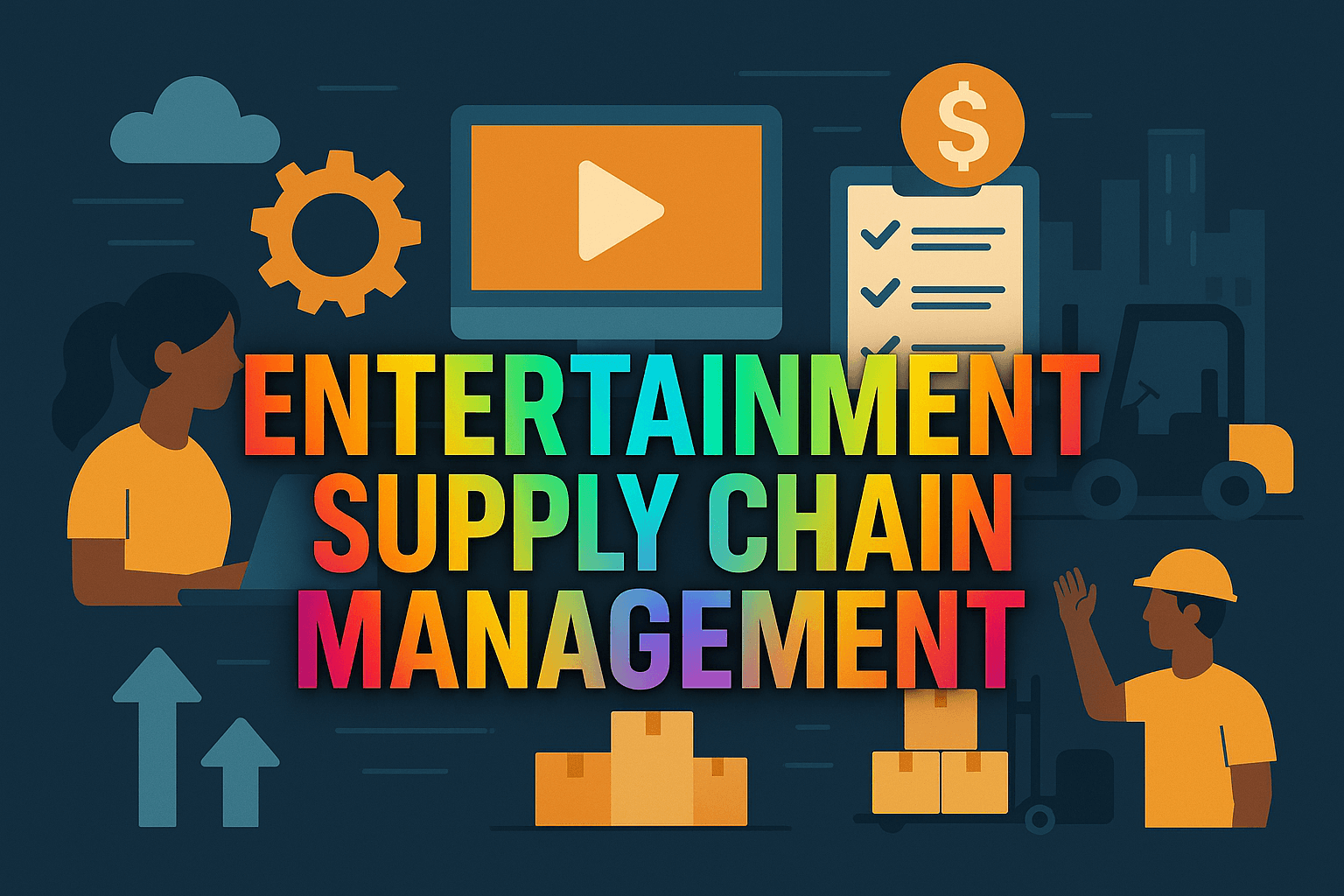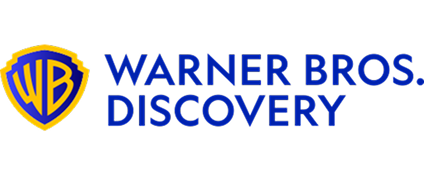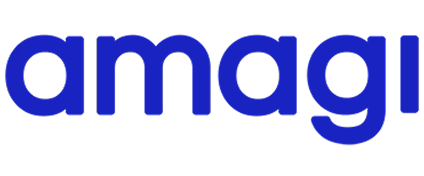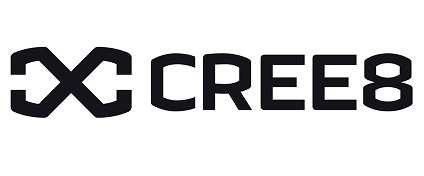The Executive Guide to Entertainment Supply Chain Management and Rigorous Vendor Qualification

Introduction
The global media and entertainment (M&E) landscape is no longer a collection of siloed productions; it is an interconnected, high-velocity supply chain, vendor qualification, entertainment ecosystem.
For senior executives, the decision of which third-party partners to engage—from VFX houses and sound design studios to international distributors and localization specialists—is the single greatest point of operational risk and strategic opportunity.
Today, a major studio or streamer may rely on hundreds of specialized vendors across dozens of territories for a single tentpole project. The traditional, fragmented, and often manual approach to vendor qualification is fundamentally incompatible with the speed and scale required by modern content pipelines.
This environment demands a new strategic mandate: treating the media supply chain not as a cost center to be minimized, but as a critical, high-value asset to be rigorously managed through intelligence and preemptive due diligence.
Table of content
- The Structural Shift in Entertainment Supply Chain Management
- Why Vendor Qualification is the Ultimate Risk Mitigation Strategy
- The Executive Framework for Vendor Selection Criteria
- Optimizing the Media Supply Chain with Data and Intelligence
- How Vitrina Transforms Supply Chain, Vendor Qualification, Entertainment
- Conclusion: Moving from Procurement to Strategic Partnership
- Frequently Asked Questions
Key Takeaways
| Core Challenge | Fragmented data makes it impossible to conduct standardized, rapid, and thorough vendor qualification, leading to high-risk partnerships and project delays. |
| Strategic Solution | Implement a unified, data-driven framework for due diligence that moves beyond transactional vetting to assess a vendor’s total financial, operational, and security risk profile. |
| Vitrina’s Role | Vitrina provides the verified industry metadata, collaboration history, and real-time project intelligence necessary to standardize and automate the vendor qualification process globally. |
The Structural Shift in Entertainment Supply Chain Management
The M&E supply chain management model has undergone a fundamental transformation, moving away from a linear, studio-centric process to a decentralized, networked model. The surge in global content production, accelerated by the streaming wars, has created unprecedented complexity.
As PwC reports, the global Entertainment & Media industry is projected to reach $3.5 trillion in revenue by 2029, yet this growth is coupled with intense pressure on profitability due to high content spend and consumer price sensitivity. This environment forces executives to be far more rigorous in their entertainment procurement strategy.
The traditional production pipeline (development production post-production distribution) is now an interconnected web. A single project may involve post-production vendors in Vancouver, animation specialists in Seoul, and localization services in Argentina, all collaborating simultaneously on secure cloud infrastructure.
This geographic and technological dispersal means that the media supply chain management challenge is primarily one of coordination, quality control, and, most critically, security.
Each new vendor represents a new entry point for risk, yet is also essential for scale. Executives cannot afford to treat these partners as mere transactional commodities; they are essential extensions of the core business, and their performance directly impacts creative quality and financial outcome.
The challenge is exacerbated by volatile market dynamics. While the global industry expands, major players are under pressure to optimize costs without sacrificing the quality that drives subscriber retention.
This zero-sum tension makes finding the optimal partner—one that provides specialized capability, technical compliance, and cost-efficiency—a non-negotiable strategic imperative.
The cost of a bad vendor decision extends far beyond the contract amount; it includes project delays, content security breaches, and reputational damage. The true inefficiency lies in the time and resources wasted on vetting, contracting, and managing subpar or unverified partners.
Why Vendor Qualification is the Ultimate Risk Mitigation Strategy
In the M&E sector, vendor qualification is not a bureaucratic hurdle; it is the first line of defense against the two most costly forms of failure: intellectual property (IP) leakage and project collapse due to operational fragility.
A rigorous qualification process proactively identifies and addresses risks that spreadsheets and Google searches simply cannot uncover.
For the entertainment industry, content is the primary asset, and its pre-release security is paramount. A security lapse at a third-party vendor—such as a post-production house being targeted by hackers, as has happened in past high-profile incidents—can lead to catastrophic financial losses and project compromise.
This is why third-party vendor risk assessment must be integrated into the qualification phase. It must confirm not just security certification (e.g., MPA’s TPN compliance), but also the vendor’s actual track record of content handling and data governance.
According to research on vendor risk management, IP and content theft is one of the biggest risks faced by entertainment companies, often exploiting the security vulnerabilities of smaller, specialized suppliers. Qualification must confirm the vendor’s physical and digital security posture, their data breach history, and their adherence to global data privacy laws like GDPR and CCPA.
Furthermore, the allure of a lower unit cost from an unknown vendor often blinds executives to the higher “Total Cost of Engagement” (TCE) caused by project delays, quality re-dos, or—worst of all—vendor bankruptcy mid-production.
The qualification process must provide a clear-eyed view of a vendor’s stability, verifying their financial health, their capacity to scale or absorb changes in scope, and their overall business longevity through established work with major studios or networks.
The core mandate is to vet a partner’s entire business model, not just their price sheet, turning qualification into a tool for supplier quality management. One of the unique challenges in media is qualifying creative vendors (e.g., VFX studios, composers, editors), whose output is highly specialized and qualitative.
The solution is a hybrid qualification model that balances quantitative compliance (financial health, security certification) with qualitative vetting using verified project history, collaboration records, and executive team experience to judge true ability.
The Executive Framework for Vendor Selection Criteria
A world-class M&E vendor selection criteria framework moves away from vague assessments and focuses on three measurable, high-impact factors: proven track record, technological readiness, and Total Cost of Engagement (TCE).
In the M&E industry, past success is the most reliable predictor of future performance, and executives must demand verifiable evidence of expertise. This means focusing on Verified Collaboration History, where you look at who a vendor has worked with, which specific studio executives were involved, and what type of project they completed.
This granular data validates their ability to operate at a high level. Specialization Alignment is also critical; a vendor may have a great overall reputation but lack experience in your exact niche, so qualification must confirm deep alignment with the project’s format, genre, and technical requirements.
Finally, understanding the Executive Credentials of the vendor’s leadership—their professional history and past roles at major entities—adds a necessary layer to the risk assessment, as the quality of a vendor is often tied to the expertise of its leadership.
The modern media supply chain operates on the cloud, meaning vendors must be qualified based on their architectural flexibility, not just their output.
This includes assessing their use of Microservices and API-First Architecture for flexible integration and scaling, and their approach to Dynamic Licensing to rapidly scale services up or down as project needs change.
Furthermore, as AI is set to transform content creation and delivery, vendors must demonstrate a clear vision for incorporating AI Readiness and machine learning tools into their workflows.
Finally, focusing solely on the lowest price (unit cost) is a classic procurement mistake that ultimately increases TCE.
Strategic qualification evaluates the true cost of partnership, factoring in Soft Costs (the cost of monitoring and problem resolution), Risk Costs (assigning a financial value to potential breaches or failures), and Innovation Costs (the value of co-development and future-proofing your workflows).
A strategic partner who brings new ideas to the table provides a return on investment that a purely transactional supplier cannot match.
Optimizing the Media Supply Chain with Data and Intelligence
The future of M&E supply chain optimization lies in replacing fragmented, static data with unified, real-time intelligence. The greatest impediment to efficient vendor qualification is the reliance on vendor-provided claims and manually gathered data points.
This is time-intensive, expensive, and non-standardized. The solution is to integrate a platform that tracks the industry in real-time.
This shifts the executive focus from asking “Are they qualified?” to “What is their current, verifiable track record and who are they working with right now?”
True due diligence for creative services requires linking various data points that were historically never connected: Project-to-Company Linkage, Company-to-Executive Linkage, and Project Stage Tracking.
This unified industry metadata allows executives to see a complete 360-degree profile, which is the necessary foundation for objective, algorithmic qualification.
The ability to track a vendor’s ongoing projects provides early warning signals regarding potential capacity overload or financial distress, turning reactive risk management into preemptive strategy.
How Vitrina Transforms Supply Chain, Vendor Qualification, Entertainment
Vitrina is the global leader in tracking the M&E supply chain, providing the necessary intelligence to transform the high-risk, fragmented process of supply chain, vendor qualification, entertainment.
The platform specifically addresses the pain points of fragmented data, manual scouting, and lack of verified credentials by replacing opaque and subjective vetting with a data-driven process.
Vitrina provides access to verified, real-time intelligence on over 400,000 companies and 3 million key executives. The platform’s core capability is its ability to link specific film and TV projects to the companies and executives who collaborated on them, creating a traceable, auditable trail of credentials.
Executives can instantly access a company’s complete record via Verified Company Profiling, including specialization, geographic footprint, and, crucially, a verifiable history of collaborations with major studios, streamers, and networks. This eliminates reliance on self-submitted references.
For Due Diligence by Collaboration History, Vitrina’s Project Tracker and Company Search allow users to filter vendors by the type of work they have successfully completed, confirming their technical capability and operational maturity in high-stakes environments.
The platform also maps the key decision-makers at both the vendor and client companies via Executive-Level Intelligence, allowing the executive to assess counterparty risk based on the experience and track record of the individuals involved, which is vital for complex, high-value co-productions and distribution deals.
By providing a single, standardized, and constantly updated source of truth, Vitrina empowers executives to conduct standardized due diligence at speed, moving M&E vendor qualification from a bottleneck to a competitive advantage.
Conclusion: Moving from Procurement to Strategic Partnership
The evolution of the M&E industry has permanently elevated supply chain and vendor qualification to a strategic C-suite priority. The old model of transactional procurement is insufficient for an environment where IP security, compliance, and rapid content turnaround are non-negotiable.
The modern executive’s mandate is to implement a standardized, data-backed vendor qualification framework that minimizes third-party risk while simultaneously enabling the scale and specialization required for global content production.
By adopting platforms that unify industry intelligence, executives can transition from slow, reactive vetting to fast, preemptive strategic partnership formation, ensuring both creative excellence and commercial integrity.
Frequently Asked Questions
The primary risks are intellectual property (IP) theft, content leakage prior to release, and data privacy breaches involving sensitive customer or employee information. Financial instability and non-compliance with global security standards like TPN also pose major operational threats.
Key criteria include verifiable project collaboration history, a clear financial health profile, proven capacity and scalability, and documented compliance with M&E content security protocols. The focus must be on total cost and risk mitigation, not just unit price.
Companies must require and verify industry-specific security certifications, such as those from the Trusted Partner Network (TPN). They should also use intelligence platforms to monitor a vendor’s historical performance and any prior security incidents to ensure ongoing commitment to compliance.
AI is increasingly used to automate labor-intensive tasks within the media supply chain, including metadata generation, quality control (QC) checks, content transcoding, and compliance flagging. This automation enhances efficiency and reduces the likelihood of human error in high-volume, repetitive processes.

























